Elk watching in Cataloochee Valley
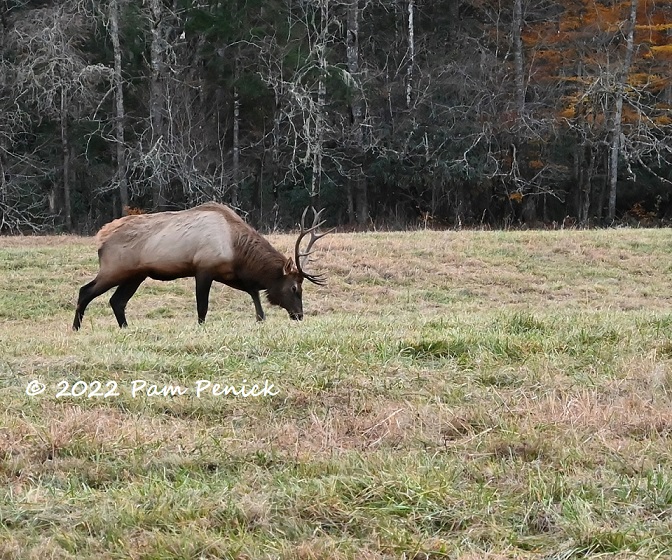
I’d hoped to hear the bugle of bull elk during our road trip through Great Smoky Mountains National Park, but those eerie, whistling autumnal calls elude me yet. Still, I can’t complain about the elk viewing in the scenic Cataloochee Valley of North Carolina, about an hour west of Asheville. We arrived at twilight on October 29th, bumping down a rugged, twisting road to reach the valley, knowing it would be dark on the way out and wondering if it would be worth the careful navigation of a narrow mountain road at night.
Oh, it sure was.
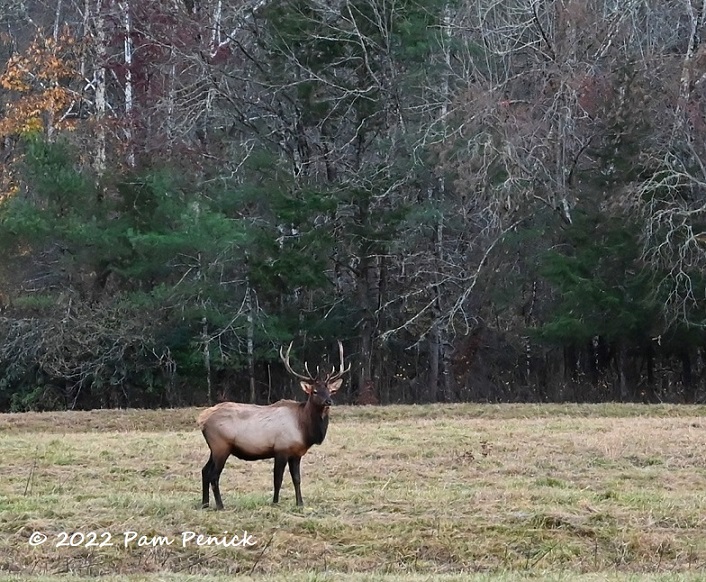
As soon as we reached the valley we saw an enormous bull elk vigilantly watching a herd of cows. We pulled over to the side of the road to watch him.
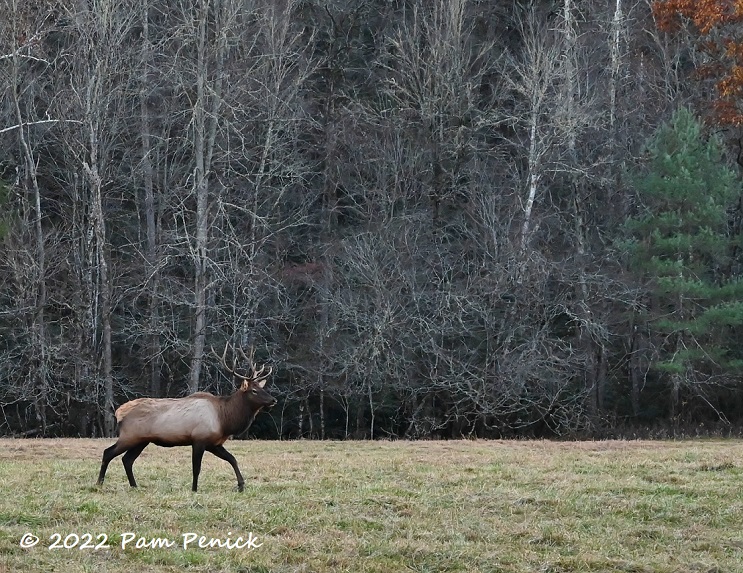
There were only a half-dozen or so other cars at that hour, with people watching quietly from their windows or standing behind their cars. The bull picked his way across a meadow, keeping pace with the cows.
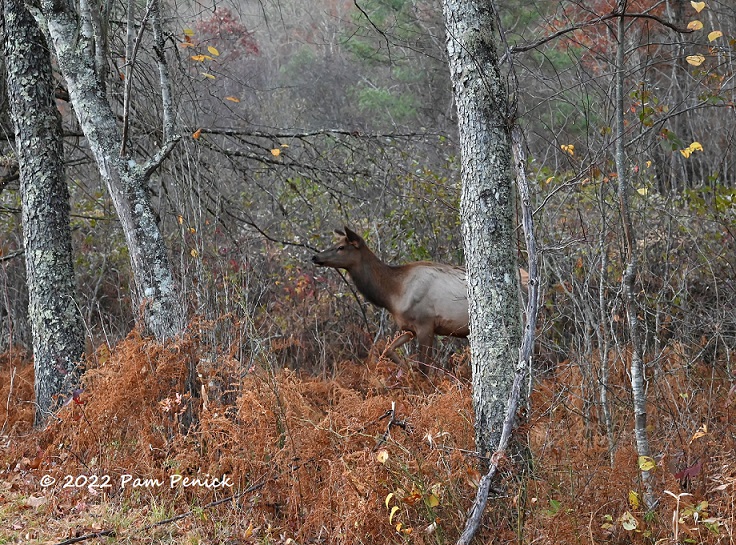
One cow emerged from a creek in the woods on the other side of the road and thought about coming across.
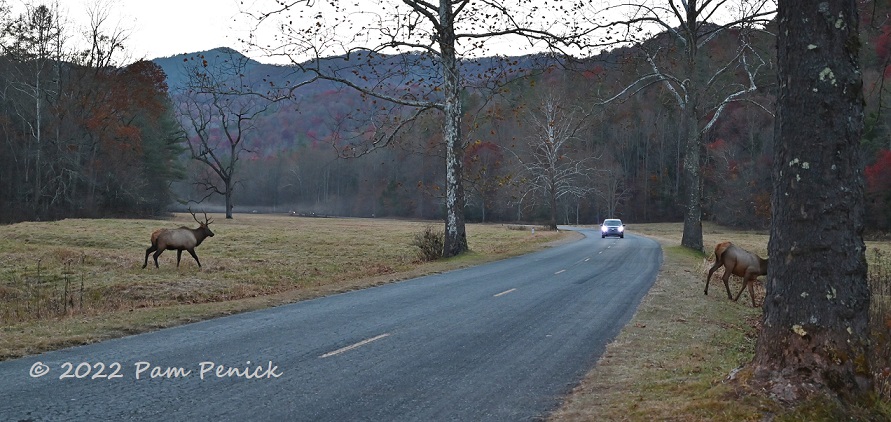
The bull decided he needed to round her up, and she turned back.
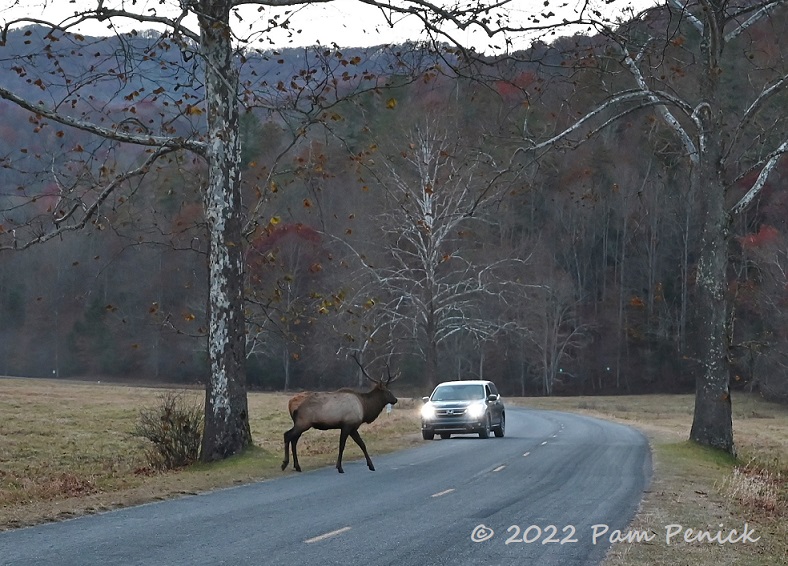
Why did the elk cross the road? During the rut, he’s got one thing on his mind: the ladies.
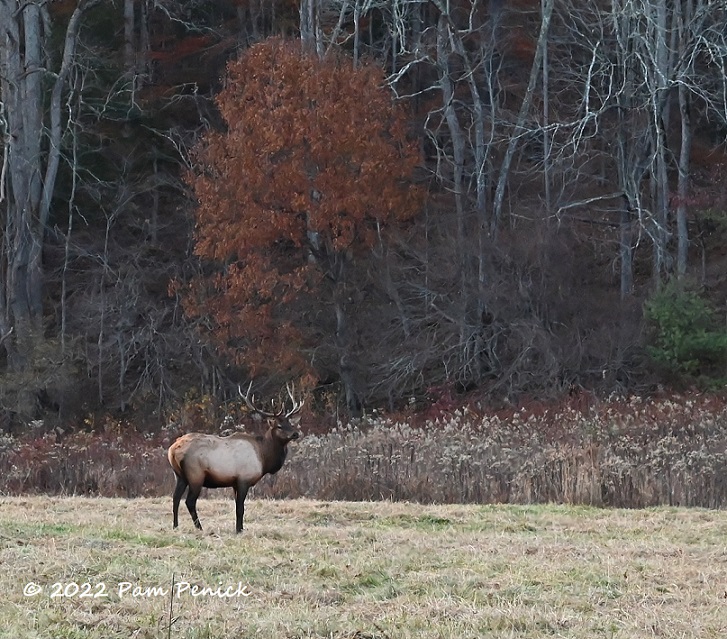
He surveys the scene.
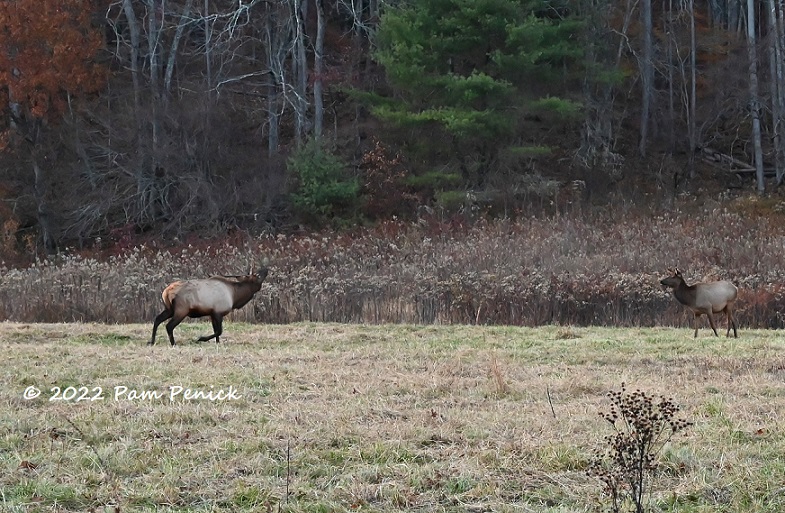
And then he lifted his muzzle and charged at her. No bugle, but he made other noises.
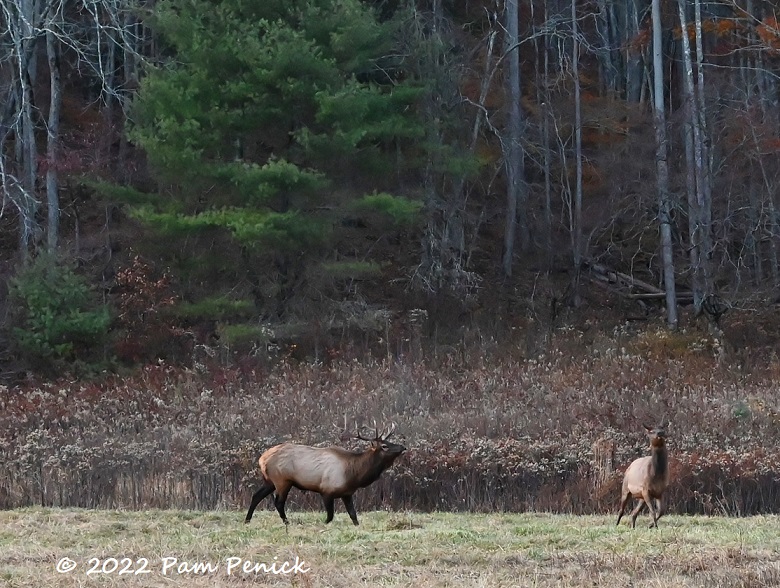
She responded by taking off running.
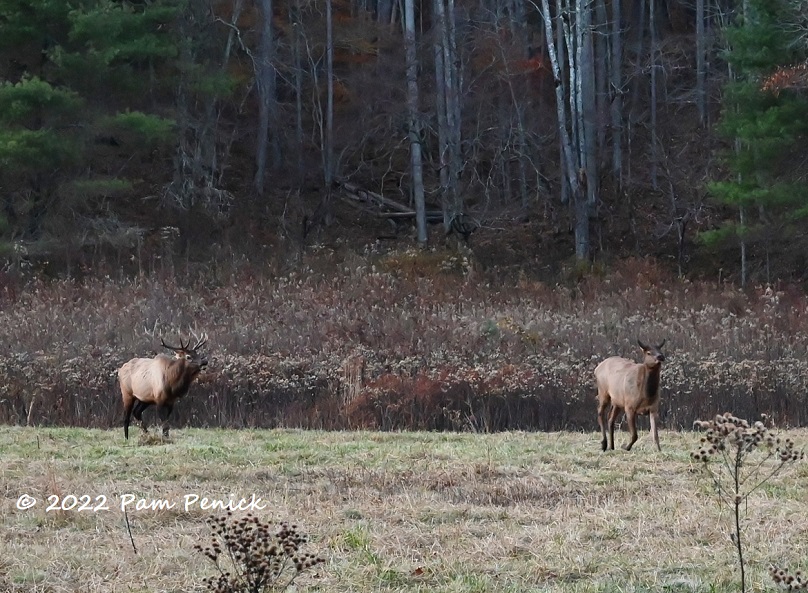
At first everything seemed pretty laid-back.
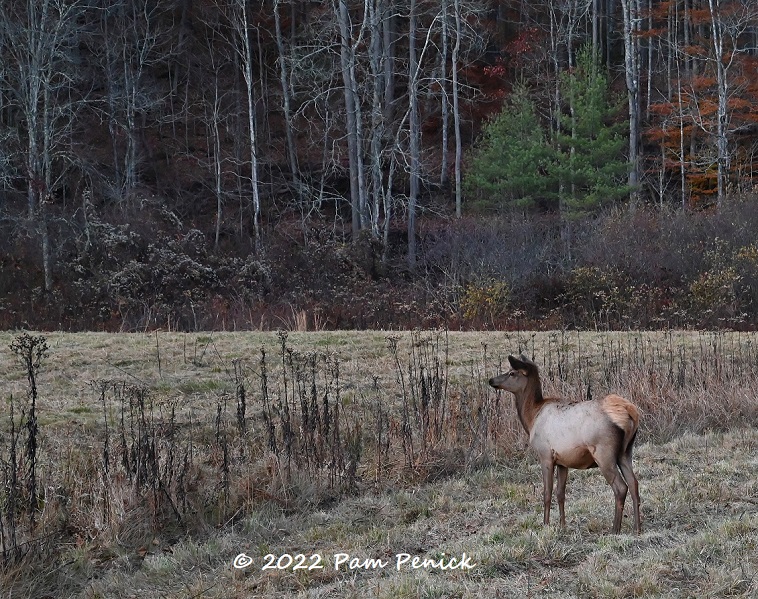
Another female looked on from across a swale.
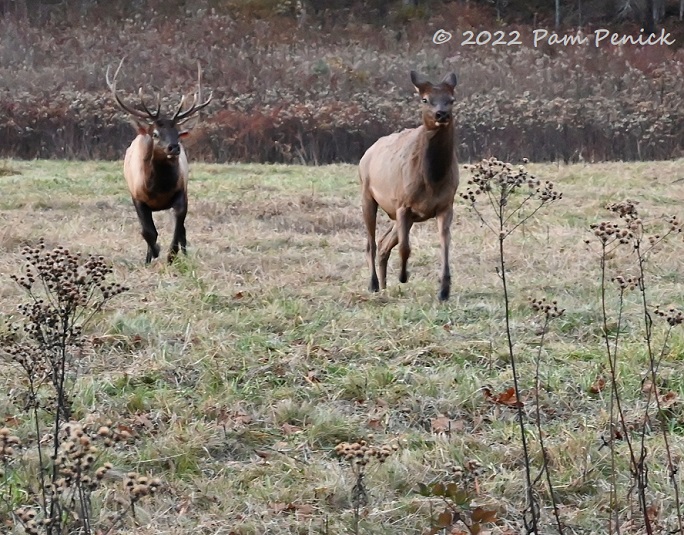
Then suddenly the bull was flat-out giving chase.
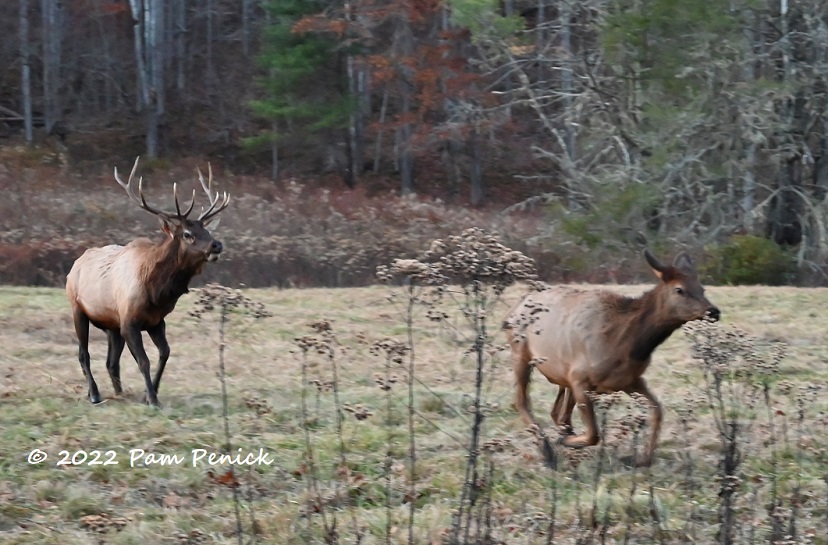
Only for a moment. As she galloped across the swale he pulled up.
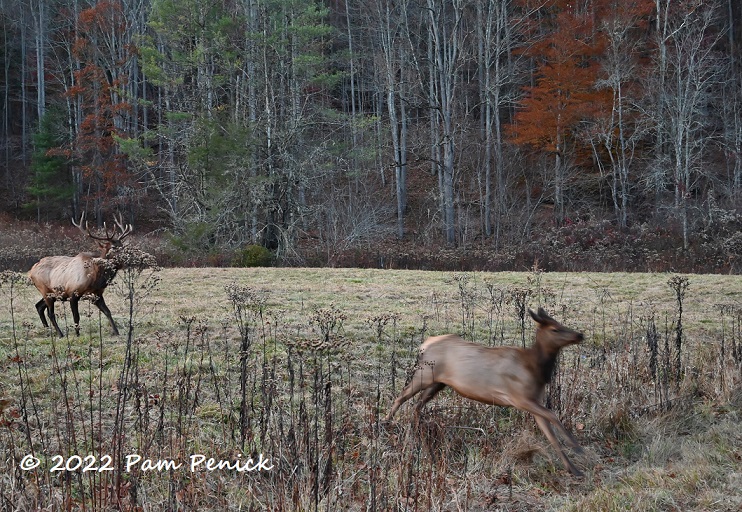
Leap!
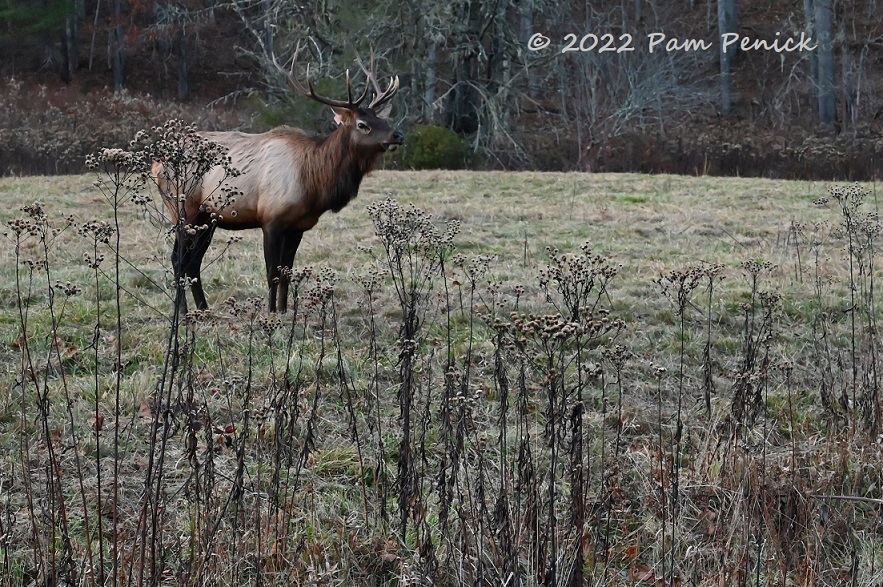
He watched her go.
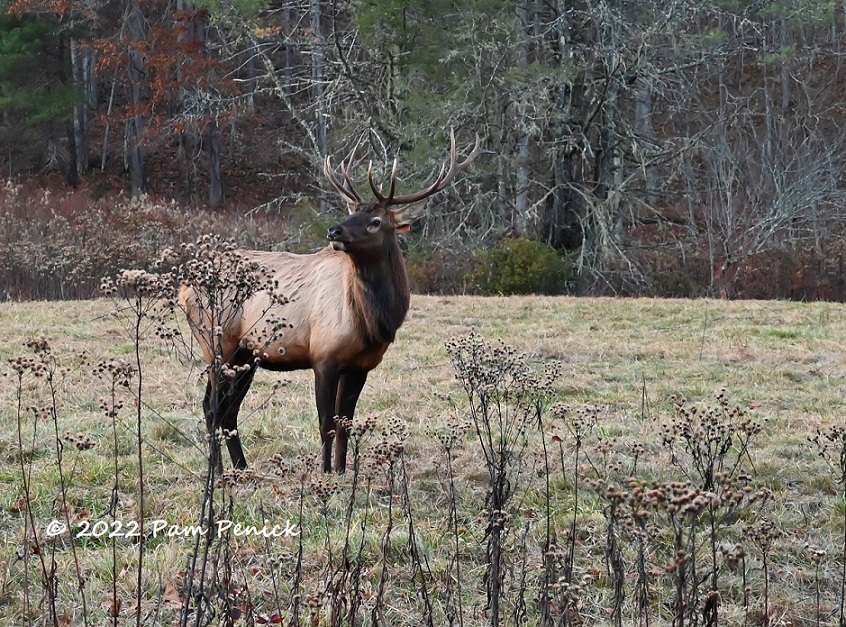
Thinking about things
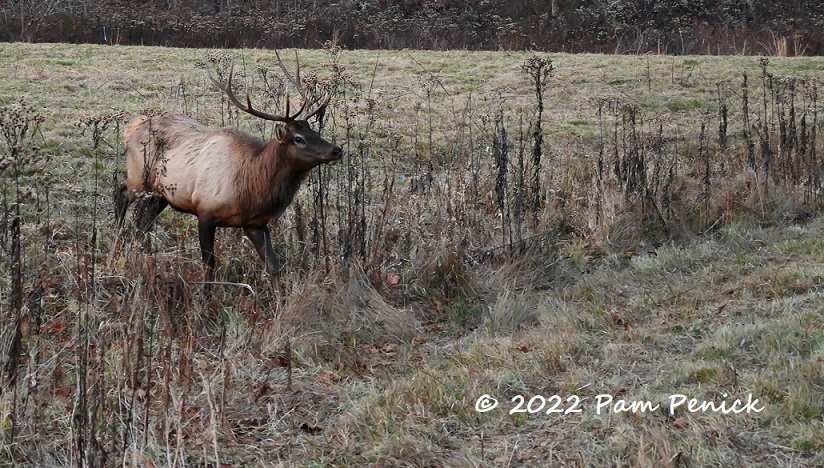
Then he followed her across the swale…
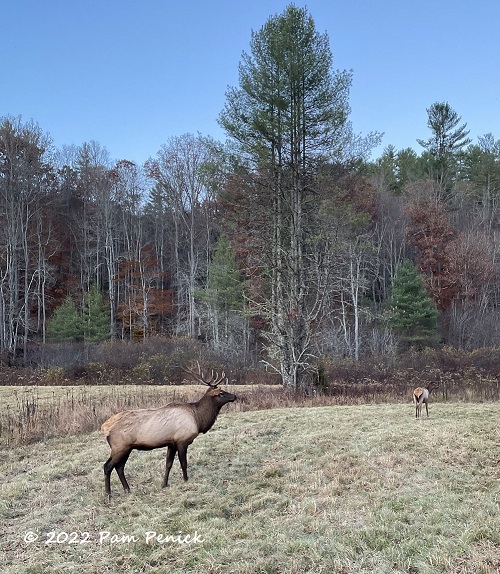
…and lurked, watching the two cows. We waited a while longer, hoping for a bugle, but eventually we lost the light, and a chill settled over the valley. We headed home, our heads filled with visions of these majestic animals.
Elk are native to the Smokies, but they were hunted out of existence here more than a hundred years ago. In 2001, 25 elk were reintroduced to the park. Another 27 were released the following year. Today the elk population has rebounded to around 200 animals.
Up next: An autumn drive through Great Smoky Mountains and Cades Cove, where we saw bears and turkeys. For a look back at the gardens of Biltmore House, click here.
__________________________
Digging Deeper
Come learn about gardening and design at Garden Spark! I organize in-person talks by inspiring designers, landscape architects, authors, and gardeners a few times a year in Austin. These are limited-attendance events that sell out quickly, so join the Garden Spark email list to be notified in advance; simply click this link and ask to be added. Season 8 kicks off in fall 2024. Stay tuned for more info!
All material © 2025 by Pam Penick for Digging. Unauthorized reproduction prohibited.


Beautiful photos. I’m delighted with the successful reintroduction of elk to the smokey mountains.
There was a fantastic series on PBS showing re wilding efforts in Europe and north America. It demonstrated how re establishing a “keystone specie” can quickly restore an ecosystem to a healthy state, before humans dilapidated it. A keystone specie can be a wolf, and elk or a rabbit… Those efforts are nothing short of inspirational and show Nature’s resilience.
Chavli
That sounds like an interesting show, Chavli. And yes, such work — undoing decades of wrongheaded overhunting or outright extermination of various species — is inspirational.
Such handsome creatures.
Indeed they are.
I’ve spend some time in Yellowstone and heard many elk bugling. It is surprising that such a high pitched, bird-like sound comes from such a large mammal. The Tuvan throat singers are like that, too – big, burly men making high pitched whistling sounds…. It just seems odd and funny.
It does! Not the sound you’d expect at all.
Interesting. You’ve been to some fascinating places lately. I haven’t spent time in North Carolina; need to get there someday.
Western NC is a beautiful region, Beth. So many reasons to visit.